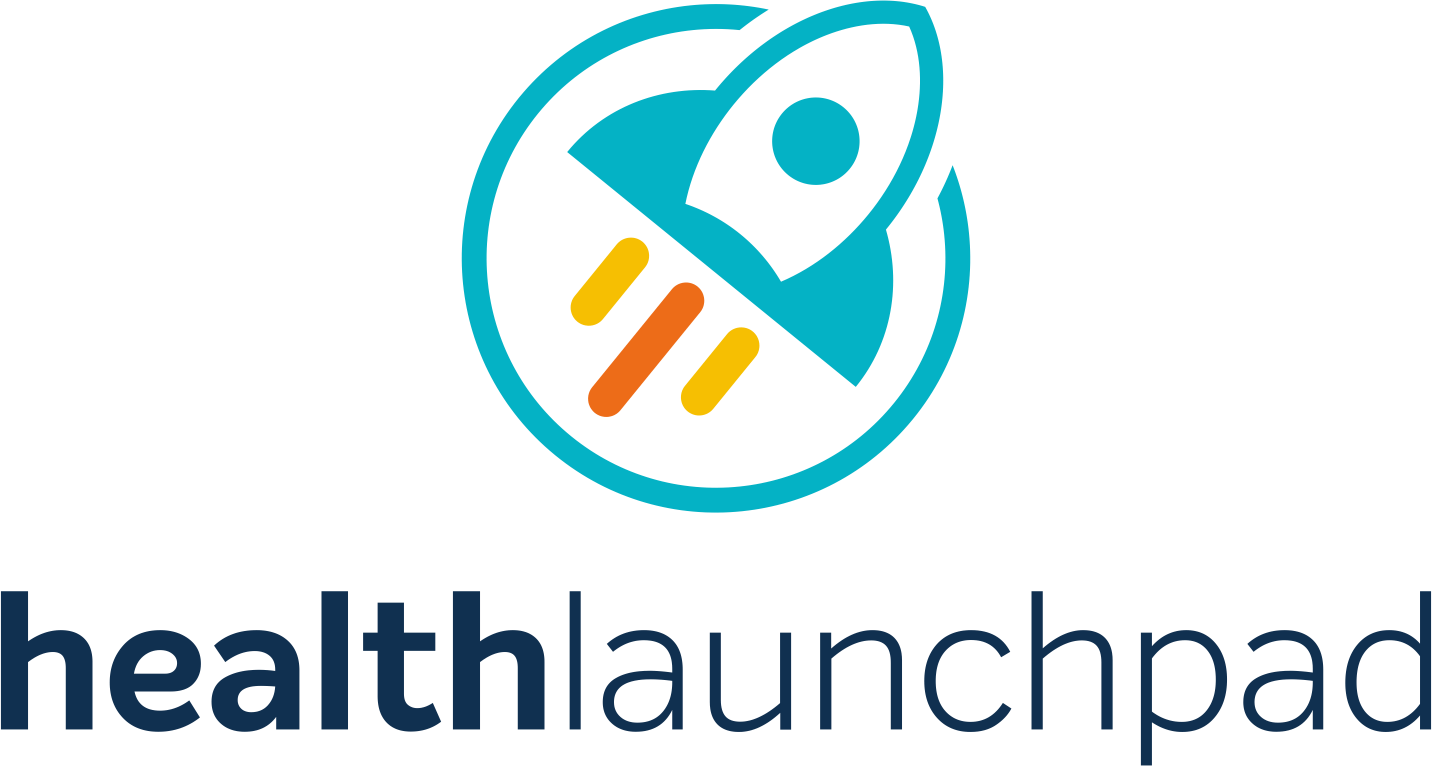Losing a job, whether planned or unplanned, is an emotional and challenging experience that most of us will face at some point in our careers. The journey to finding your next opportunity can be overwhelming, but with the right mindset, strategies, and resources, you can navigate this process successfully. In this article, we’ll provide actionable advice and insights from industry experts to help you land your next gig in the health tech industry.
I want to thank Fred Mather and Erik Jonson for giving perspectives and advice on a recent episode of the Healthtech Marketing Show. Fred Mather is a longtime sales executive and member of Pavilion’s leadership team, and Erik Johnson is a seasoned tech marketing leader. They shared their personal experiences and offered guidance on navigating the complex process of finding a new job. From coming to terms with job loss and establishing your unique value proposition to leveraging your network and preparing for interviews, this episode covers all the essential aspects of a successful job search.
Being on the Bench
Coming to Terms with Job Loss
When you find yourself “on the bench,” it’s essential to acknowledge the emotional impact of losing your job. Take a moment to reflect on what you wish you had been doing to prepare for this situation. Don’t dwell on the past; instead, focus on the steps you can take to move forward.
First Steps: Establishing Your Value and Targeting the Right Companies
Before diving into your job search, take a breath and assess what you bring in terms of experience and skills. Identify your values and the types of companies that align with them. Research organizations that fit your profile and proactively reach out to them. This targeted approach will help you focus your efforts on opportunities that are the best fit for you.
In Fred’s words, “Take a breath and establish what you bring in terms of experience and skills. Match your values with the types of companies you want to work for.”
Letting People Know: Leveraging LinkedIn and Offering Help
While there is debate around using the “Open to Work” feature on LinkedIn, it’s crucial to become socially active on the platform by sharing your views and opinions in your areas of expertise. Position yourself as a thought leader and offer help and advice to others. This giving perspective can lead to valuable introductions and opportunities.
Looking for Opportunities
Engaging with Recruiters and Controlling Your Search
Engage with recruiters for networking and potential opportunities, but don’t rely solely on them. Take control of your search by identifying target companies and initiating conversations. Tapping into your secondary network can be more helpful than your primary connections, as they may be more willing to make introductions.
Networking: Advertising Your Skills and Offering Help
Use LinkedIn to showcase your skills and what you can bring to an organization. Lead with offering help and advice to others, as this can result in introductions and opportunities. As Fred says,
“Position yourself as a thought leader and offer help and advice to others.”
Resources to Know About: Communities, Education, and State Programs
Take advantage of resources like Pavilion, a community membership group focused on career development, and local HIT communities and HIMSS chapters.
Per Erik, “Pursue secondary education or certifications to augment your knowledge and change your narrative.”
These can sometimes be funded through state programs like dislocated workers programs.
Making Yourself More Valuable: Continuous Learning and Consulting
Fred’s advice: “During your job search, become a student by mastering a new craft or skill.”
Engage in consultancy work to build your profile and credentials. Pursue secondary education or certifications to augment your knowledge and change your narrative. These efforts will make you a more attractive candidate and demonstrate your commitment to continuous learning.
The Value of Secondary Connections: Unlocking Hidden Opportunities
Fred says it’s important to “tap into your secondary network, as they may be more willing to make introductions.”
When searching for a new job, many people focus primarily on their immediate network of friends, family, and close colleagues. While these primary connections can be valuable, it’s essential not to overlook the power of secondary connections. These individuals, who are connected to you through your primary contacts, can often provide unexpected opportunities and open doors that may otherwise remain closed.
Why Secondary Connections Matter
- Expanded Reach: Secondary connections significantly expand your network, giving you access to a much larger pool of potential contacts and opportunities.
- Fresh Perspectives: People outside your immediate circle can offer new insights, ideas, and approaches to your job search that you may not have considered.
- Less Pressure: Secondary connections may feel less pressured to help you directly, allowing them to be more open to making introductions or sharing information.
- Unexpected Opportunities: You never know who your secondary connections know or what opportunities they may be aware of that could be a perfect fit for you.
How to Leverage Secondary Connections
- Ask for Introductions: Reach out to your primary contacts and ask if they know anyone who might be able to offer advice or assistance in your job search. Be specific about the types of roles or companies you’re interested in.
- Attend Industry Events: Participate in conferences, workshops, and networking events in your field. These gatherings provide excellent opportunities to meet new people and expand your secondary network.
- Join Professional Organizations: Become a member of industry-specific organizations or groups, such as local HIT communities or HIMSS chapters. Engage with other members and attend events to build relationships with professionals outside your immediate circle.
- Utilize LinkedIn: LinkedIn is a powerful tool for identifying and connecting with secondary contacts. Use the platform’s search function to find people who work at your target companies or have experience in your desired role. Look for mutual connections who can introduce you.
- Offer Value: When reaching out to secondary connections, focus on providing value rather than asking for favors. Share relevant articles, insights, or resources that may be helpful to them. By establishing yourself as a valuable contact, they may be more inclined to assist you in return.
The Job Search Timeline: What to Expect
Be prepared for a lengthy interview process, which can take 4-8 weeks or more. At executive levels, finding employment can take 6-12 months or longer in the current market. Maintain a pipeline of opportunities, as not all will result in a job offer. Stay persistent and continue to refine your approach based on feedback.
Interview Success: Authenticity, Preparation, and Learning from Disappointment
To excel in interviews, maintain a positive attitude, and focus on your strengths. Be authentic and present yourself confidently. Prepare a concise summary of your background and experience to answer the “Tell me about yourself” question effectively.
“Provide specific and detailed answers, especially when discussing topics like AI applications.” says Erik
“Prepare a concise summary of your background and experience to answer the ‘Tell me about yourself’ question effectively.” according to Fred
If you face disappointment, seek feedback and learn from the experience to improve your performance in future interviews.
Actionable Steps for Job Seekers
- Assess your skills, experience, and values to establish your unique value proposition.
- Research companies that align with your profile and values, and create a targeted list of organizations to approach.
- Optimize your LinkedIn profile to showcase your expertise and thought leadership. Share insights and engage with your network regularly.
- Offer help and advice to others in your network, as this can lead to valuable introductions and opportunities.
- Engage with recruiters for networking and potential opportunities, but don’t rely solely on them. Take control of your job search by proactively reaching out to target companies.
- Tap into your secondary network, as they may be more willing to make introductions and connections than your primary contacts.
- Join industry-specific communities, such as Pavilion, local HIT groups, and HIMSS chapters, to expand your network and access resources.
- Pursue secondary education or certifications to enhance your skills and knowledge, taking advantage of state programs that may provide funding.
- Consider engaging in consultancy work to build your profile, gain experience, and demonstrate your expertise.
- Prepare for interviews by developing a concise summary of your background and practicing responses to common questions. Focus on providing specific and detailed examples of your experience and knowledge.
- Maintain a positive attitude throughout the job search process, and view disappointments as opportunities to learn and grow.
- Stay persistent and continue to refine your approach based on feedback from interviews and networking conversations.
Real-World Examples
- Sarah, a marketing director in the health tech industry, found herself unexpectedly laid off. She took a week to process her emotions and assess her skills and experience. Sarah updated her LinkedIn profile, highlighting her thought leadership by sharing industry insights and engaging with her network. She researched companies that aligned with her values and created a targeted list of organizations to approach. Sarah reached out to her secondary network, asking for introductions and advice. Through these connections, she learned about a certificate program in digital health marketing, which she pursued to enhance her skills. Sarah also joined a local HIT community and attended events to expand her network. After three months of targeted outreach and interviews, Sarah landed a new role as a senior marketing manager at a health tech startup.
- Michael, a sales executive with 15 years of experience, decided to take a proactive approach to his job search after his company announced layoffs. He assessed his skills and experience, focusing on his strengths in building relationships and closing deals. Michael optimized his LinkedIn profile and started sharing insights on sales strategies in the health tech industry. He offered advice and introductions to others in his network, which led to a conversation with a former colleague who was hiring for a sales director position. Michael prepared for the interview by developing a concise summary of his background and practicing responses to common questions. He provided specific examples of his successes and demonstrated his knowledge of the company’s products and market. After two rounds of interviews, Michael received a job offer and successfully negotiated a competitive compensation package.
In Conclusion
Navigating the job search process can be challenging, but by following the actionable steps outlined in this article, you can increase your chances of finding your next gig in the health tech industry. Remember to assess your skills and values, research target companies, leverage your network, and continuously learn and grow. Stay persistent, maintain a positive attitude, and view setbacks as opportunities to refine your approach. With dedication and the right strategies, you can successfully land your next opportunity and take the next step in your career.

